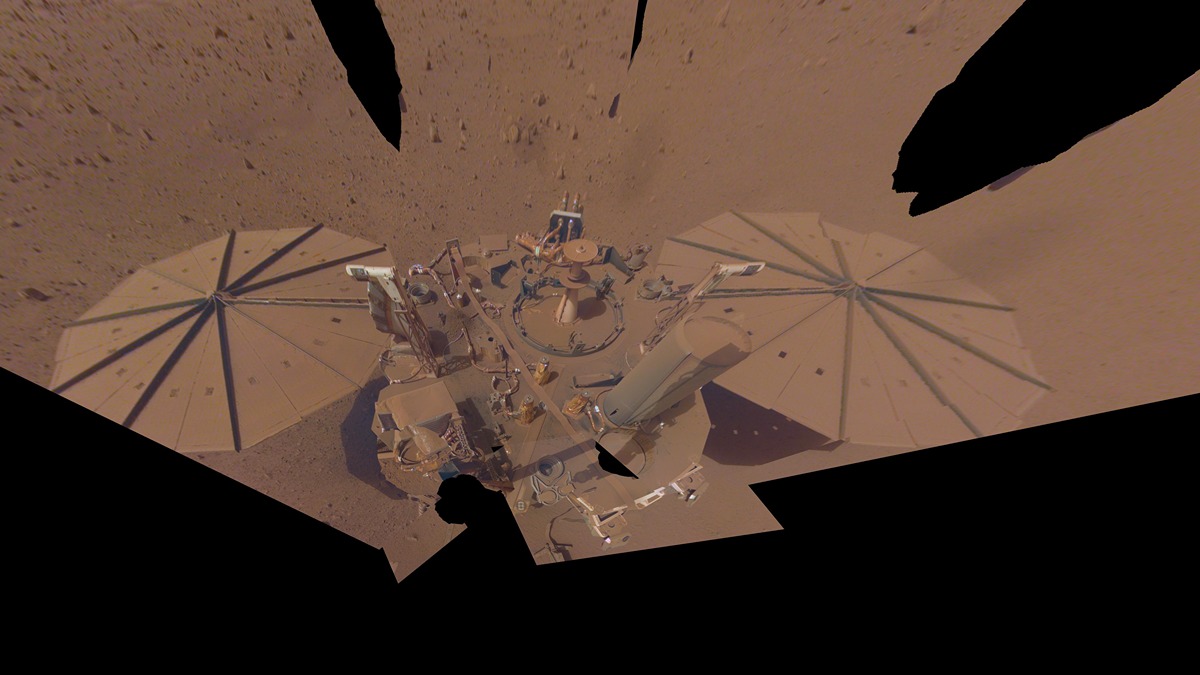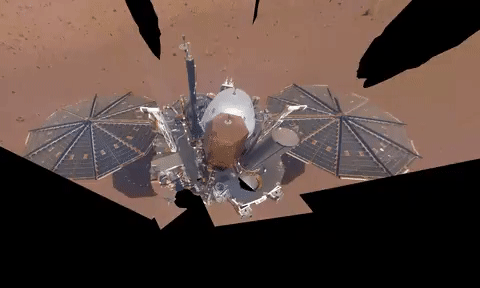Can we save Mars robots from death by dust?
Some Mars robots get help from nature to fend off dust for longer.

NASA's Mars InSight lander died a slow death by dust last week. For months and months, the robot, built to study the tectonic activity on the Red Planet, has been running on less and less power as its 25-square-foott (4.2 square meters) solar power array gradually disappeared under a thick blanket of dust. On Wednesday (Dec. 21), NASA announced it hadn't heard from the lander for days, officially pronouncing the mission dead.
InSight, which landed in the flat, seemingly uninteresting Elysium Planitia basin, south of Mars' equator in November 2018, exceeded its expected mission duration by two years. Still, many asked whether anything could have been done to save the otherwise perfectly healthy robot, which had been delivering groundbreaking science about the internal life of Mars.
Related: NASA's Mars InSight lander ends mission after losing power
Cost versus benefit
In a Twitter thread posted about six weeks before InSight's ultimate demise, NASA explained the trade-offs faced by engineers when designing a mission for the notoriously dusty Mars.
"People often ask: don’t I have a way to dust myself off (wiper, blower, etc.)? It’s a fair question, and the short answer is this," NASA wrote on the lander's Twitter account. "A system like that would have added cost, mass, and complexity. The simplest, most cost-effective way to meet my goals was to bring solar panels big enough to power my whole mission – which they did (and then some!)."
Dust storm season
When sending landers to Mars, space agencies usually try to avoid the planet's dust storm season, which occurs during Mars' northern autumn and winter periods. Since a year on Mars lasts about two Earth years, most of the recent landers and rovers, InSight included, made it through multiple dust storm seasons. The Curiosity rover, which is now in its 11th year on Mars and still going strong, has seen quite a few dust storm seasons. The rover even made measurements of the changing amount of dust accumulated on its sensors and deck, revealing how seasonal winds and dust devils help rovers keep going for longer. As it transpires, InSight was rather unlucky when it comes to Mars' natural cleaning aid.
No dust devil car wash
Dust devils have been famously seen cleaning NASA's older generation of Mars rovers, Spirit and Opportunity. Opportunity, in particular, was able to continue its mission for over 14 years, exceeding its designed three-month lifetime dozens of times. Regular dust devil sweeps and wind-induced cleaning events played an important role in that record-breaking mission. At the end, a huge dust storm in 2019 finally overpowered the little rover, ending its record-breaking journey of discovery.
Breaking space news, the latest updates on rocket launches, skywatching events and more!
According to Mike Williams, Chief Engineer at Airbus Defence and Space, which is currently rethinking the dust defense approach for the European ExoMars Rosalind Franklin rover, InSight seemed to have been in a "particularly unfavorable position for dust removal."

Tilting solar panels
Williams agrees that NASA's approach of outsized solar panels is the best, safest and cheapest when it comes to dust-proofing Mars-exploring spacecraft. However, Airbus is currently looking at the possibility of adding a dedicated dust defense capability, and they have plenty of time to do that. The mission, built in cooperation with Russia, was suspended in the wake of Russia's invasion of Ukraine. The planned September launch was canceled, and Airbus is now storing the ExoMars rover in a clean room as some critical components, originally built by Russia, have to be replaced.
"Sizing the arrays to be able to manage the lower amount of sunlight that reaches them because of the dust is the best and simplest solution," Williams told Space.com. "It's the lowest level of complexity. It requires the least number of subsystems and functions and so it has the lowest risk. From the perspective of designing a mission, that's definitely the most preferable way of going about it."
Williams said that when the ExoMars mission was first conceived, engineers considered a plethora of dust cleaning technologies, including brushes, wipers, gas blowers and electrostatic wipers to get rid of the dust. At that time, they decided the rover, whose nominal mission in Oxia Planum was designed to last only 180 Martian days, or sols, didn't need to self-clean. With the new launch date now expected no earlier than 2028, they are rethinking their approach again.
"With ExoMars now being reborn, we are looking at possibly reinstating some of that capability," Williams said. "We could use something like solar panel tilting to possibly dislodge some of that dust. It would also help point the panels more efficiently at the sun, which may also have some benefits."
Williams added that Airbus engineers, just like NASA's, have to reconcile with the fact that ExoMars, just like other spacecraft on Mars, may eventually succumb to dust, and won't be disappointed if the rover outlasts its designed mission lifetime only marginally. Although they hope to get some help from Martian weather just like Spirit and Opportunity.
"It's just, it's just the way it goes with space missions, unfortunately," Williams said.
InSight's self-cleaning attempt
Even though InSight wasn't built to wipe dust off of itself, NASA made some last resort attempts to help the lander remove some of the dust in the final months of its life as the amount of electricity generated by its panels dwindled.
In May, ground controllers commanded InSight's robotic arm to sprinkle a bit of sand across one of the lander's dust-covered panels. As wind blew the sand grains across the panel, they actually picked up some of the dust along the way, reducing the thickness of the sun-obstructing dust blanket.
The operation enabled the lander to gain about 30 watt-hours of energy per sol at that time, according to a NASA statement.
In the end, nature won. As it always does. And InSight certainly didn't go down without a fight.
Follow Tereza Pultarova on Twitter @TerezaPultarova. Follow us on Twitter @Spacedotcom and on Facebook.

Tereza is a London-based science and technology journalist, aspiring fiction writer and amateur gymnast. She worked as a reporter at the Engineering and Technology magazine, freelanced for a range of publications including Live Science, Space.com, Professional Engineering, Via Satellite and Space News and served as a maternity cover science editor at the European Space Agency.
